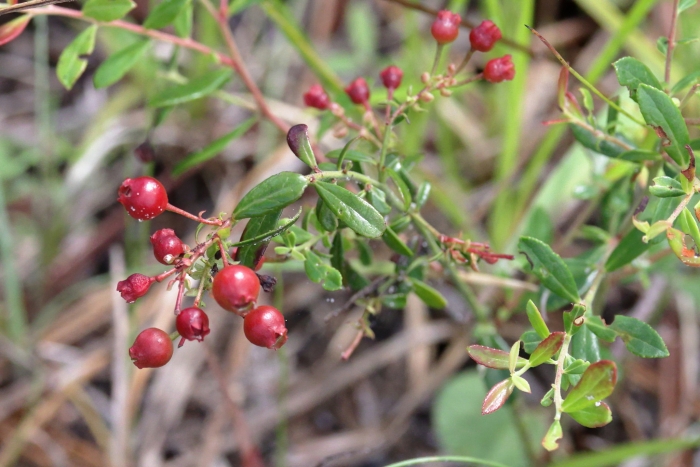Shiny Blueberry
(Vaccinium myrsinites)
Shiny Blueberry (Vaccinium myrsinites)
/
/

Lauren McLaurin
CC BY 4.0





















































Estimated Native Range
Summary
Shiny Blueberry is valued for its ornamental features, including its glossy foliage and delicate flowers. It is used in naturalistic plantings, as a ground cover, and in wildlife gardens. The plant thrives in dry, sandy, acidic soils and requires full sun for optimal growth. It is relatively low-maintenance, needing only medium amounts of water once established. While it is not commonly afflicted by diseases, it can suffer from root rot in poorly drained soils. Gardeners should be aware that it can spread vigorously, potentially becoming too aggressive in some settings.CC BY-SA 4.0
Plant Description
- Plant Type: Shrub
- Height: 1-2 feet
- Width: 1-2 feet
- Growth Rate: Slow
- Flower Color: Pink, White
- Flowering Season: Spring, Summer
- Leaf Retention: Evergreen
Growth Requirements
- Sun: Full Sun, Part Shade
- Water: Low, Medium
- Drainage: Slow, Medium
Common Uses
Bank Stabilization, Bee Garden, Bird Garden, Border Plant, Butterfly Garden, Drought Tolerant, Edible*Disclaimer: Easyscape's listed plant edibility is for informational use. Always verify the safety and proper identification of any plant before consumption., Groundcover, Hummingbird Garden, Potted Plant, Rock Garden, Showy Flowers
Natural Habitat
Native to pine flatwoods, dry sandy woods, and scrubby areas in the Southeastern United States
Other Names
Common Names: Evergreen Blueberry, Southern Evergreen Blueberry
Scientific Names: , Vaccinium myrsinites, Vaccinium nitidum, Vaccinium corymbosum var. myrsinites, Cyanococcus myrsinites, Vaccinium myrsinites var. lanceolatum, Vaccinium myrsinites var. obtusum, Vaccinium nitidum var. decumbens,
GBIF Accepted Name: Vaccinium myrsinites Lam.